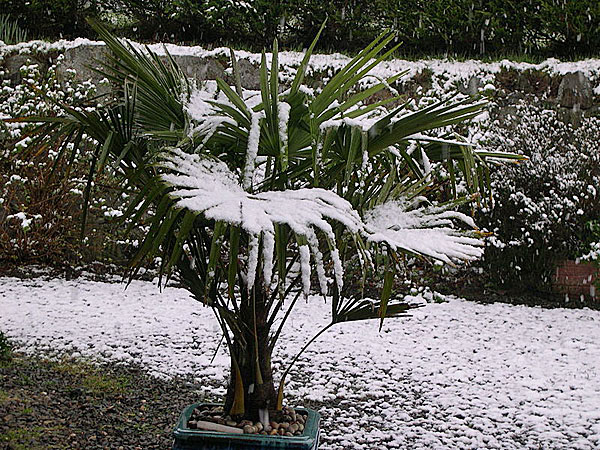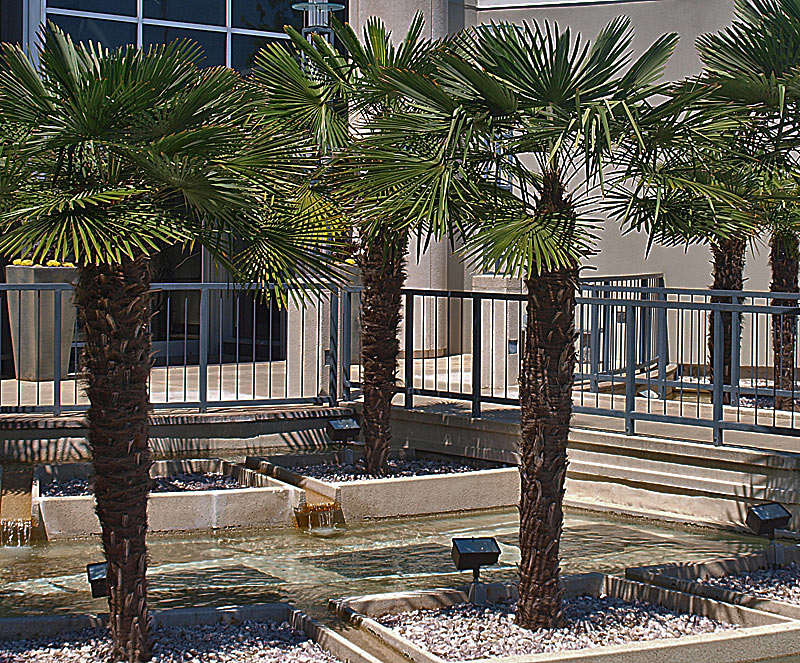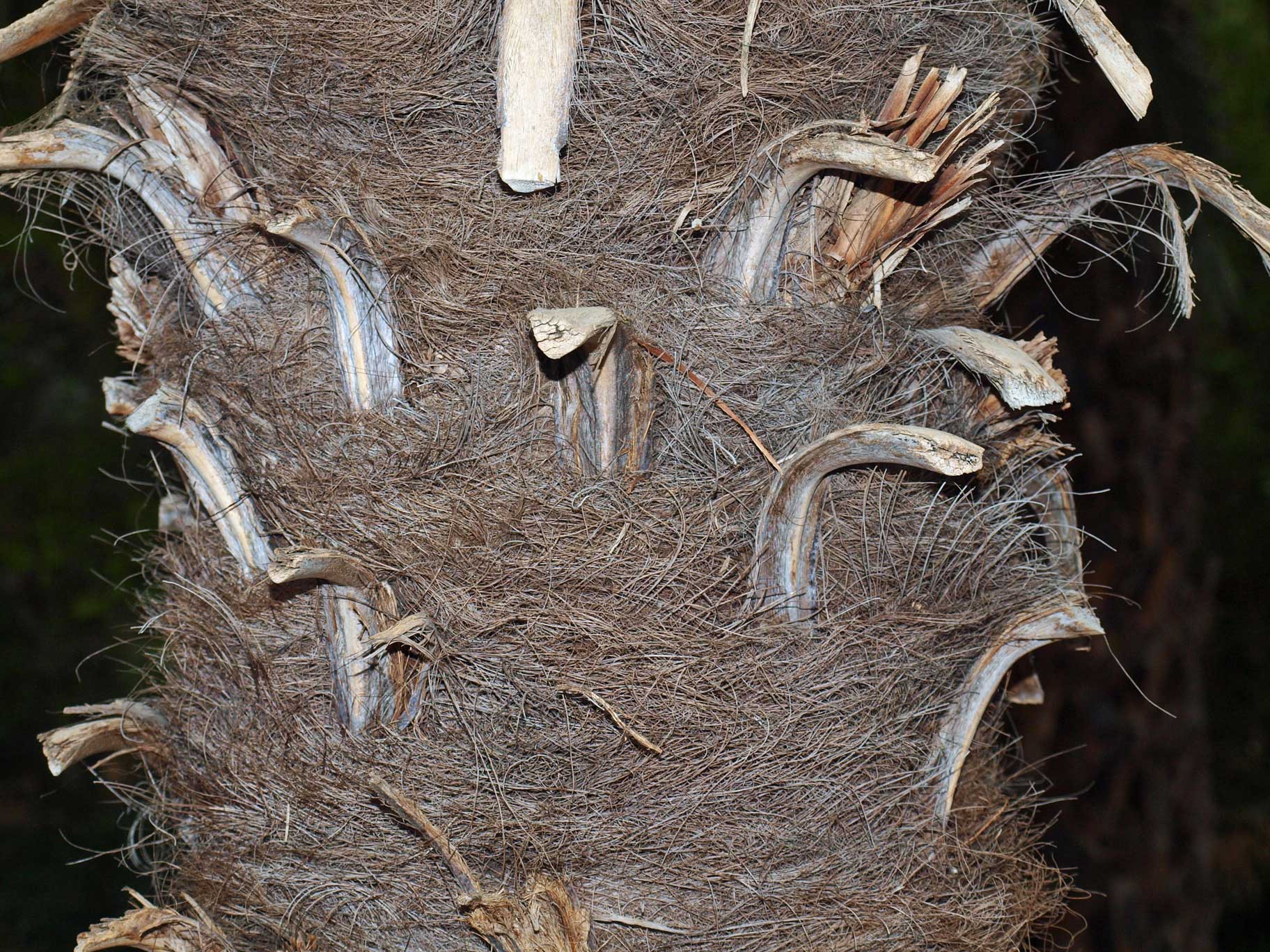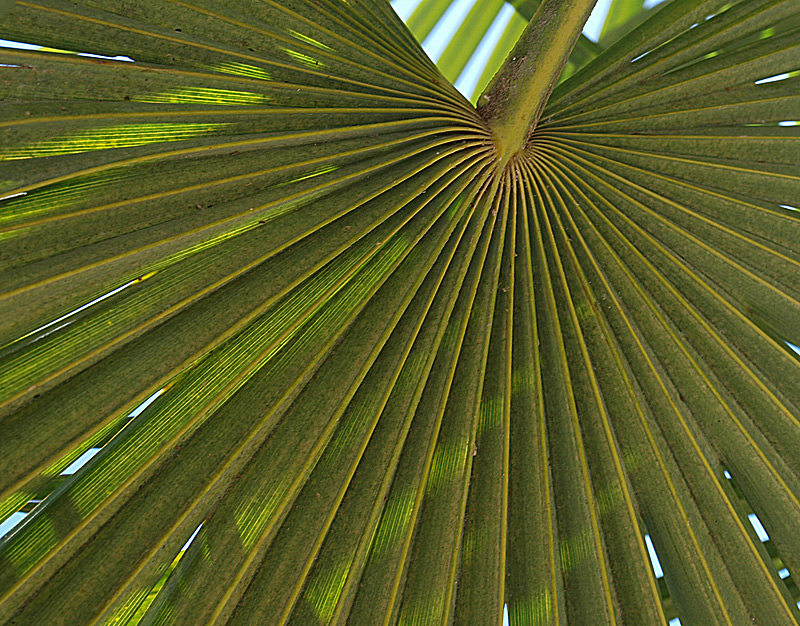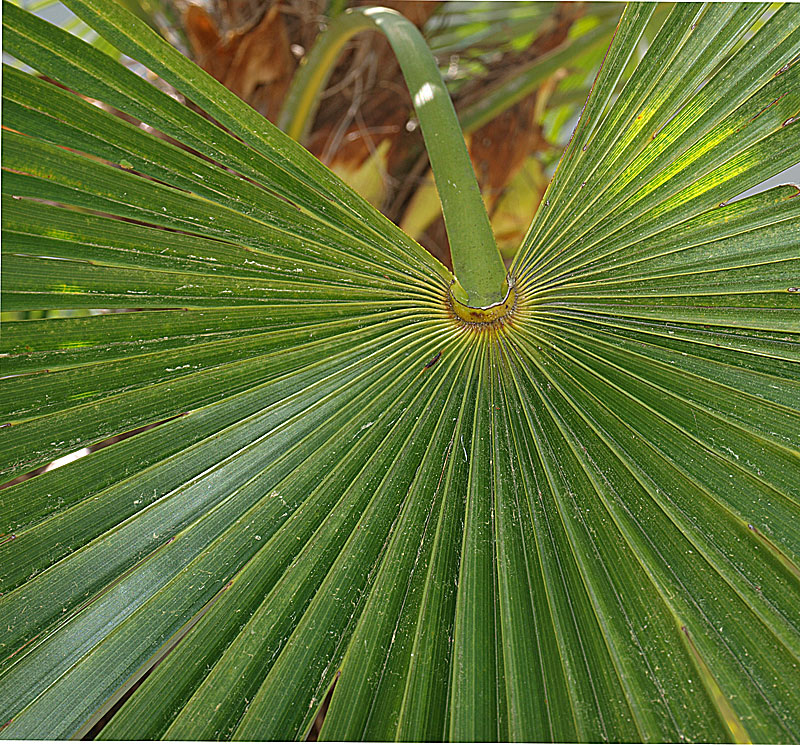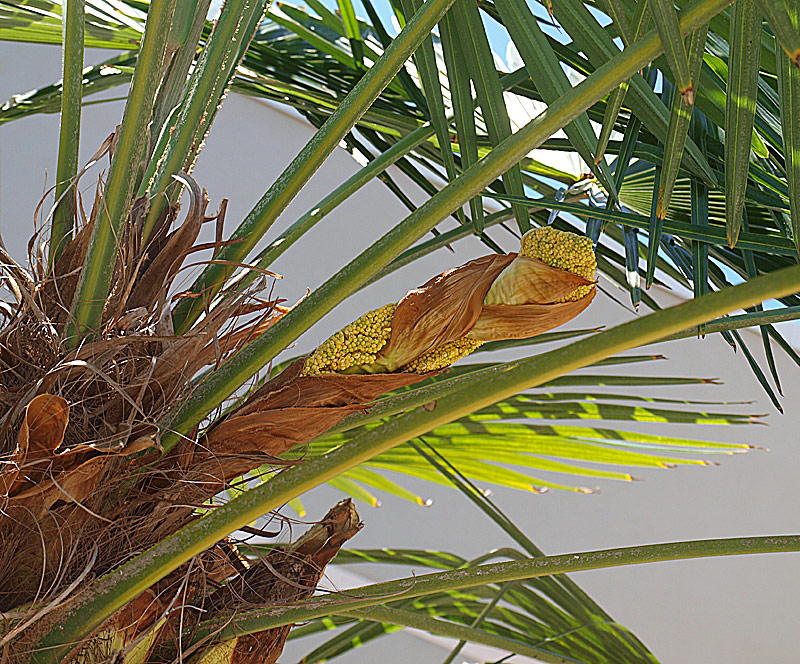Trachycarpus fortunei
|
Trachycarpus fortunei in snow. Photograph courtesy of Peter Clarke, wikimedia. |
|
Trachycarpus fortunei in landscape |
|
Trachycarpus fortunei stem |
|
Trachycarpus fortunei abaxial leaf blade |
|
Trachycarpus fortunei adaxial leaf blade with hastula |
|
Trachycarpus fortunei canopy with budding inflorescence |
|
Trachycarpus fortunei with blue fruit |
Common name
windmill palm, Chinese windmill palm
Description
Stems: Solitary, erect gray to brown stems, to 12 m tall, slender, to 30 cm in diameter, with matted brown fibers and remnant leafleaf:
in palms -- the leaf blade (which is usually divided into leaflets or leaf segments), the petiole (or leaf stalk) and the sheath (which forms the attachment of the leaf to the stem)
bases. Leaves: Palmatepalmate:
like the palm of a hand; fan palms have palmate leaves that are usually divided into leaf segments arising from a central point, although a fan palm may have entire leaves (e.g., <em>Licuala grandis</em>)
, induplicateinduplicate:
Most palm leaflets or leaf segments are obviously folded. If the folds create a V-shape, with the midrib lower than the margins (so that rain might fall "into a valley"), the folding is induplicate.
, with a nearly circular blade to 1 m across, divided almost to the base by lanceolatelanceolate:
term to describe leaves and leaflets that are longer than wide and widest below the mid-point; lance-shaped
segments with sometimes stiff, sometimes drooping tips, bifidbifid:
deeply cleft into two usually equal parts or two-lobed from the apex; for example, palms with bifid leaves or leaflet tips (e.g., <em>Chamaedorea metallica</em> has bifid leaves)
to 1 cm; with a petiole longer than the blade and its margin toothed, with obscure bumps or unarmed; the adaxialadaxial:
toward the axis or the side of an organ facing toward the axis (<strong>ad </strong>as in <strong>ad</strong>here); for example, the upper surface of a leaf blade or petiole
hastula is raised and triangular to circular. The upper leafleaf:
in palms -- the leaf blade (which is usually divided into leaflets or leaf segments), the petiole (or leaf stalk) and the sheath (which forms the attachment of the leaf to the stem)
surface is dark green; the undersurface, silvery green. Flowers and fruits: Inflorescenceinflorescence:
the reproductive structure of a flowering plant, including palms, consisting of flowers and associated bracts
to 50 cm, congested and densely branched to four orders. The yellow or whitish male and female flowers grow on separate plants. The fruits are 1-1.5 cm, kidney-shaped and purplish-black covered with a waxy blue bloombloom:
a white-gray waxy powder that covers a surface
when ripe.
Diagnostic features
Palmate palmate:
like the palm of a hand; fan palms have palmate leaves that are usually divided into leaf segments arising from a central point, although a fan palm may have entire leaves (e.g., <em>Licuala grandis</em>)
leaves, solitary, erect gray to brown stems with matted brown fibers and remnant leafleaf:
in palms -- the leaf blade (which is usually divided into leaflets or leaf segments), the petiole (or leaf stalk) and the sheath (which forms the attachment of the leaf to the stem)
bases. Petiole longer than the blade and its margin toothed or with obscure bumps; the raised, adaxialadaxial:
toward the axis or the side of an organ facing toward the axis (<strong>ad </strong>as in <strong>ad</strong>here); for example, the upper surface of a leaf blade or petiole
hastula is triangular to circular. Ripe fruits are 1-1.5 cm, kidney-shaped, and appear waxy blue.
May be confused with
Very young, short-statured Trachycarpus fortunei palms may be confused with Chamaerops humilis, but that species has prominent, slender spines along the petiole. Serenoa repens is also palmatepalmate:
like the palm of a hand; fan palms have palmate leaves that are usually divided into leaf segments arising from a central point, although a fan palm may have entire leaves (e.g., <em>Licuala grandis</em>)
with a spiny petiole, but the teeth are small and crowded along the margin.
Distribution
Native to China
Additional comments
This species is among the most cold tolerant palms.
Scientific name
Trachycarpus fortunei H.Wendl.
Family
Arecaceae/Palmae
Synonyms
Chamaerops fortunei Hook.


